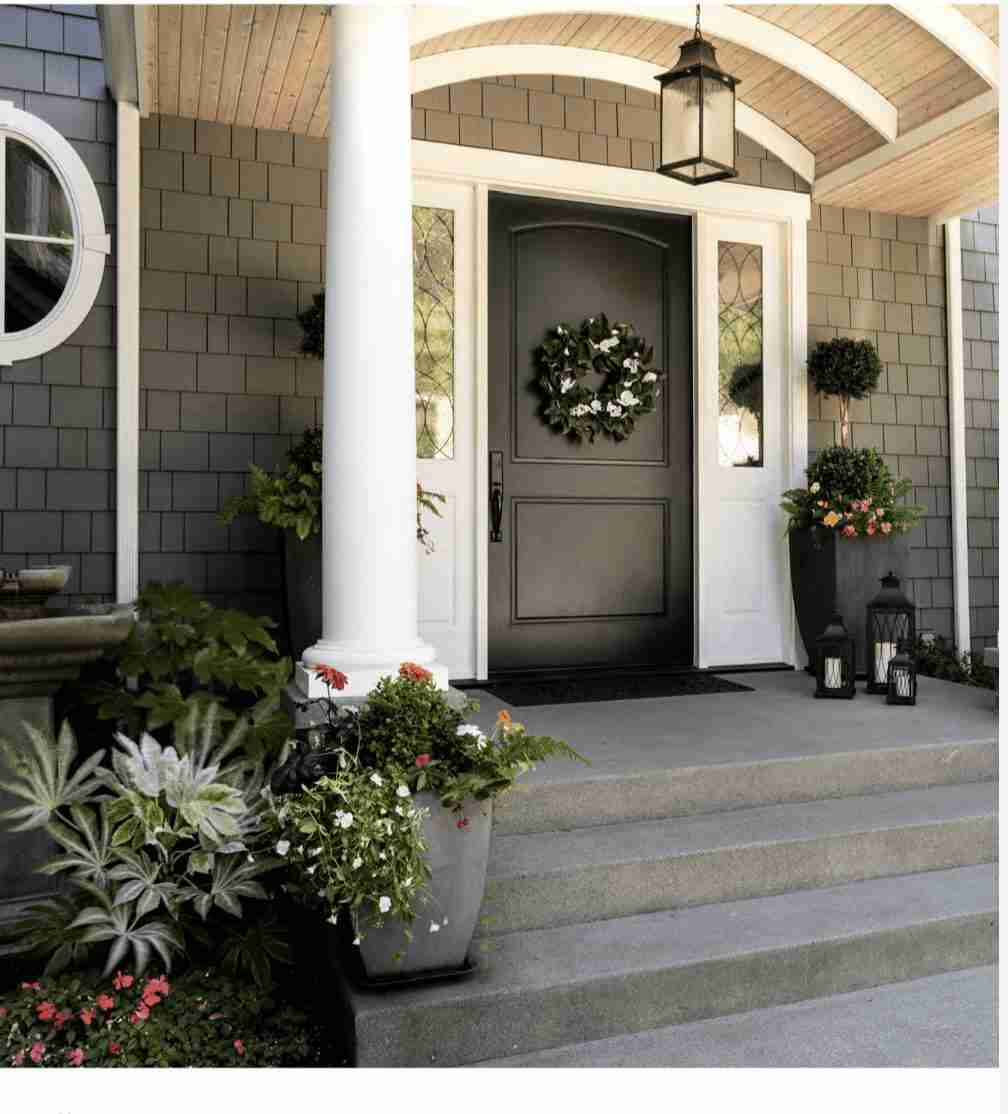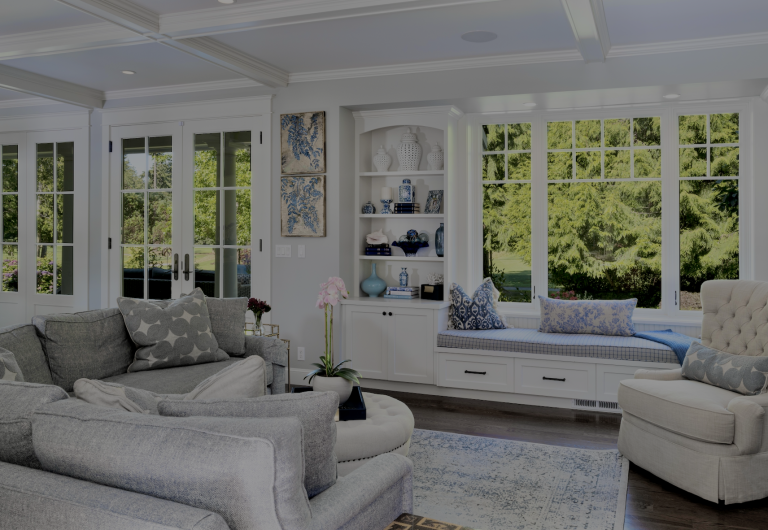12 IMPORTANT LESSONS WE LEARNED FROM OUR HOME REMODEL
Anyone who’s ever gone through a remodel can tell you that it’s a huge undertaking! Between trying to stay on budget, time, and manage contractors, it can feel like a nightmare at times. Based on our recent home remodel I wanted to share what we learned throughout our process in hopes to help others planning a remodel.
If we were to plan a remodel again, (which I hope does not happen for a long time) with appropriate prep work and organization, we would handle the process differently the second time around. If you have never tacked a major remodel before, this post is for you.
Are you considering a remodel? If you’re planning a next remodel, there are 12 steps to a successful remodel. Here we will give you the steps to consider throughout the remodeling process so you can pull it off on the budget without a hairy mess.
THE 12 STEPS TO A SUCCESSFUL REMODEL PROJECT
1. DEVELOP YOUR VISION
Before you do anything, take time to develop your vision and expectations for your home remodel. Ask your self the following questions:
- What rooms will you remodel?
- What features of the home are most important to you? Do you want to create a mindful home?
- What style are you going after? Be consistent with one theme. I was going for a South Hampton home style with curve (windows, arches, roof line) Do you have your heart set on a farmhouse, cape cod, cottage, craftsman, contemporary or mid century modern home style? You get the point. The key is you will want to stay consistent throughout the entire design of your house.
2. BEGIN WITH A DETAILED PLAN
This is the most critical item before you even approach a contractor. Work with either a professional designer or architect who will design a comprehensive plan to show your contractor so that he knows exactly what you have planned for your space. Walking your contractor through your space without a detailed plan in hand will allow the contractor to change his pricing as he goes, since the specifics were never discussed from the beginning.
I don’t recommend using a permit drawing because a these plans only contain limited information and will not offer all of the details that a contractor will need to offer a fair bid.
Make sure to decided on your finishings before you meet with the builder/contractor. Make a list of your specifications. Your finishes, fixtures, appliances and accessories will give your builder an idea on what your expectations are.
The price to renovate a kitchen can vary by tens of thousands of dollars depending on appliances and finishes. If you can choose your plumbing fixtures, finishes and accessories ahead of time, you will save yourself and your contractor time during the construction process. Also if you know the associated costs to install your specified items in advance it will help with budgeting. I wish we did this!
3 . BUDGET
This budget is very hard to determine as building costs have increased so much over the last decade. The costs are staggering and will no doubt surprise you. With this in mind, there are many templates online you can use to keep the process organized in order to come up with a realistic estimate for it.
Realistically you will not be able to estimate the cost until you have a design plan so you can get estimates from builders but go into the process educated.
The biggest issue with our remodel was that our GC did not communicate with us when there was a decision made that effected the overall budget.
Our GC was not on top of the overall budget. We trusted him and assumed we were on budget during the first 6 months of the project only to find out that our GC was not communicating with us when there was a decision made on our behalf that affected the budget. This became our biggest nightmare.
The problem started when we received the initial bid. We figured that our builder would let us know when costs started to add up.
4. HIRE YOUR DREAM TEAM
Next up is to interview contractors. You will definitely want to interview at least three contractors. I can’t emphasize this enough. Hiring a contractor to oversee your project is by far the biggest and most critical decision you will make.
You should trust your gut on retaining a General Contractor. It seems really obvious but based on our remodeling experience, your hiring the ideal contactor is imperative. Since there are many minor and significant decisions that pop up regularity, learn to trust your gut when making decisions. Contractors and subs have their own opinions, you must be mindful to listen to your voice in your head and go with your gut decision. If you don’t, you may regret the decisions.
WHAT TO LOOK FOR IN A CONTRACTOR:
- Resources- Check all resources by connecting with the homeowners who have hired the contractor in the past. Check formal and informal references including Angie’s List and other review sites. It’s also a good idea to the city building portal to review the contractor’s client load etc. Do not go on word of mouth alone or take a sub’s feedback into consideration unless they are telling you not to work with someone. Our experience is that the subs back up the GC even when they are cognizant that a GM may be problematic. It’s all about money.
- Bids-Meet with at least three builders/contractors and detailed bids from all three. Interview each one knowing that the personality, goals and work ethic should be in line with your expectations. Is the bid organized and well thought out? Check out their work in person as well.
- Timelines-This is a tough one. Ask anyone who has ever remodel their home if the project was completed on time. The answer is always “no”. Time is money so ask if the contractor to provide you with a work-back schedule if hired. Plan on being at least 8 weeks over the deadline to manage your expectations. I know it sucks!
- Communication-Email and call your prospective GC and builders just to see what their response time is like. You will need a person who responds to you quickly as many contractors do not. It’s a red flag if you have to wait for their reply or the feedback is not helpful.
- Attention to Detail –Make sure the individuals you hire take notes each time you meet. There are so many details to keep track of so attention to detail and organization is key. The contractor we hired never showed up with a pen, pencil or paper when we met and the result was not good.
- Vision- Does the contractor/builder have a solid vision and understanding about the look and feel of the home you want?
5. BE PRESENT
Every day of the remodeling process you will come across decisions you have to make right away. There were so many situations where we would show up at the work site only to find out something just didn’t look right or a contractor had a question.
If you will not be on site often enough, then just know that someone will make decisionsfor you. Some people are fine with that if they have a good architect overseeing the project. In our case, situations came up all the time that we needed to make an immediate decision on. If you have a reliable contractor, then he/she should ask you or your architect these questions. Decisions such as where to place a light switch or the how high you want your bathroom mirror may seem minor at the time but in the long run, you will not be happy if things don’t turn out how you wish.
6. THINK TWICE BEFORE HIRING A DESIGNER
I had so many people urge me to hire a designer to help with paint colors and structural design changes throughout the remodel process. I am so glad I didn’t hire anyone to even get a second opinion. I had hired someone for another project years ago and it was a big mistake.
If you have good taste in décor and design, don’t hire a designer. Take your time to make your house your own. I love how our house turned out and I don’t regret any of my design choices. It was fun designing the house too.
Figure out what type of style and theme you are going with? A coastal vibe? Modern or contemporary? What about a timeless tradtional design? Whatever it is, make it your own.
7. SOURCING MATERIALS
We had a transparent conversation with our GC in the beginning as we told him we were planning to use our contacts and resources to buy some of our materials directly. Do you know anyone in the building business? Do you have a Costco account?
For instance, we had a contact in the window business so we could get the best pricing on all our windows. We didn’t cut our GC out of the deal but we could purchase the windows for less that our GC could. We also bought our own sinks, toilets and a bathtub through Costco. I also ordered all of our hardware and lighting on-line. These decisions saved us lots of money.
8. EXPECT MISTAKES
Building is never perfect so expect that mistakes will happen along the way, there is no way to avoid it. I had envisioned an outside balcony outside our master bedroom but when it came down to it, we could not add this feature due to support issues. The door into our master, we are thrilled with the overall result.
9. BE KIND TO THE WORKERS
We took superb care of all the subcontractors that worked on our house. We often bought them lunch, doughnuts and coffee and made friends with many of them.
From what I understand, many homeowners do not even talk to the manual labor workers so when you thank them for their hard work, they feel appreciated and work harder for you.
10. INVOICES
Make sure you ask your GC for all the sub’s invoices and expense receipt with every invoice you get from your General Contractor. When we did this, we found discrepancies. We then had to go back to the GC and ask for clarification.
11. KEEP GOOD RECORDS
Put together a binder with sections for each area of the project with research notes, photos, calculations and more. I also kept my design, decor and furniture notes in one place. This was helpful.
12. PLAN YOUR FURNITURE PLACEMENT
I took pictures and measurement of all the furniture pieces that we had planned to keep and re-use in the new home design. I gave this information to our designer architect so she could draw our home plans based on the key pieces of furniture we wanted to use. For instance, I have a few antiques and chairs that we love. When designing the dining and living area we made sure that these furniture pieces fit nicely in the plan.
Take Away:
Remodels can be a pain in the you know what! In the long run, most remodels are worth the time and energy. Make sure you work with the right people, take the necessary steps and precautions to avoid the pitfalls we experienced with our remodel.
Please let us know if you what you have learned from your remodel process.
Best,







